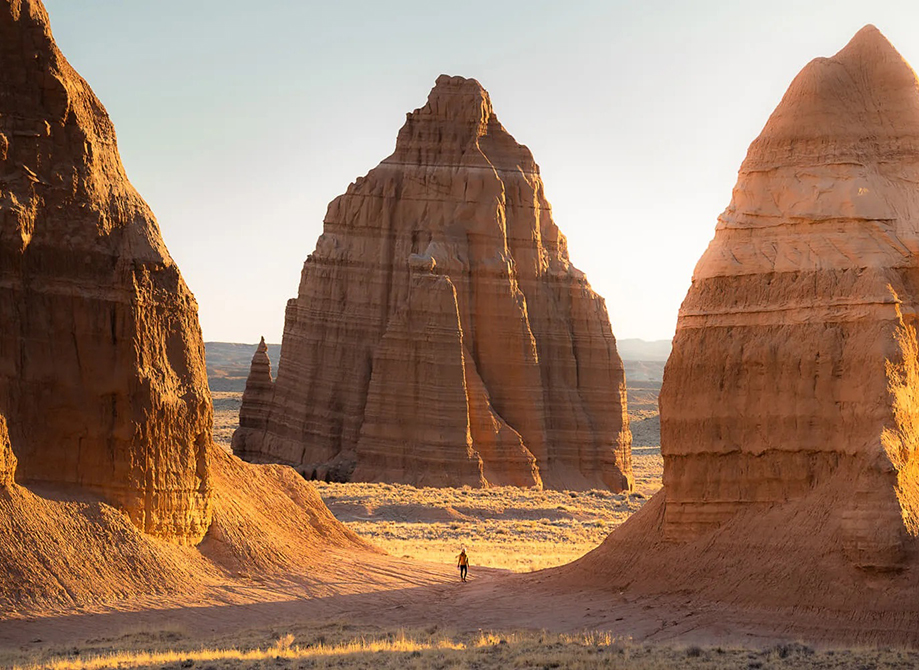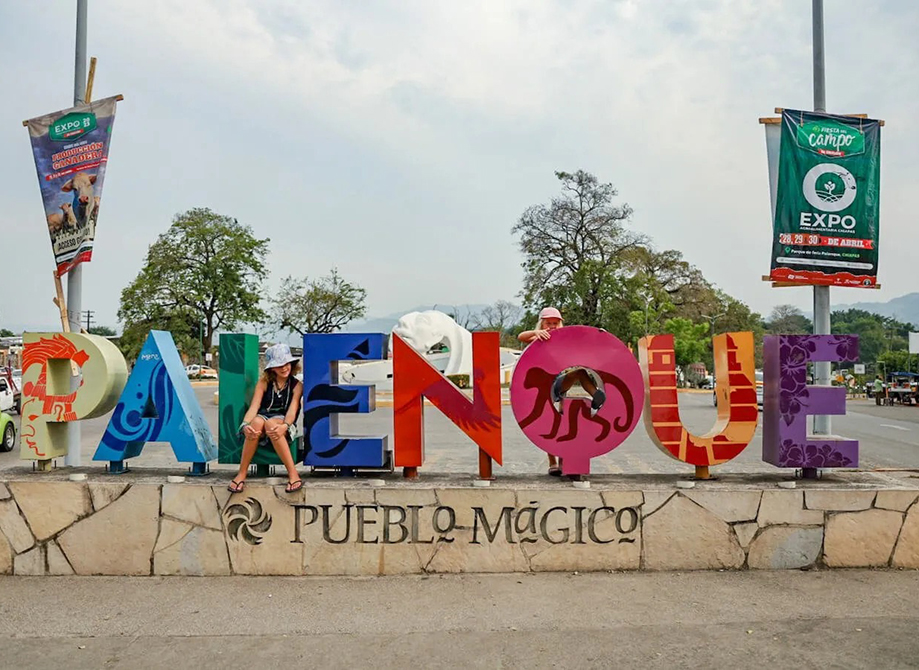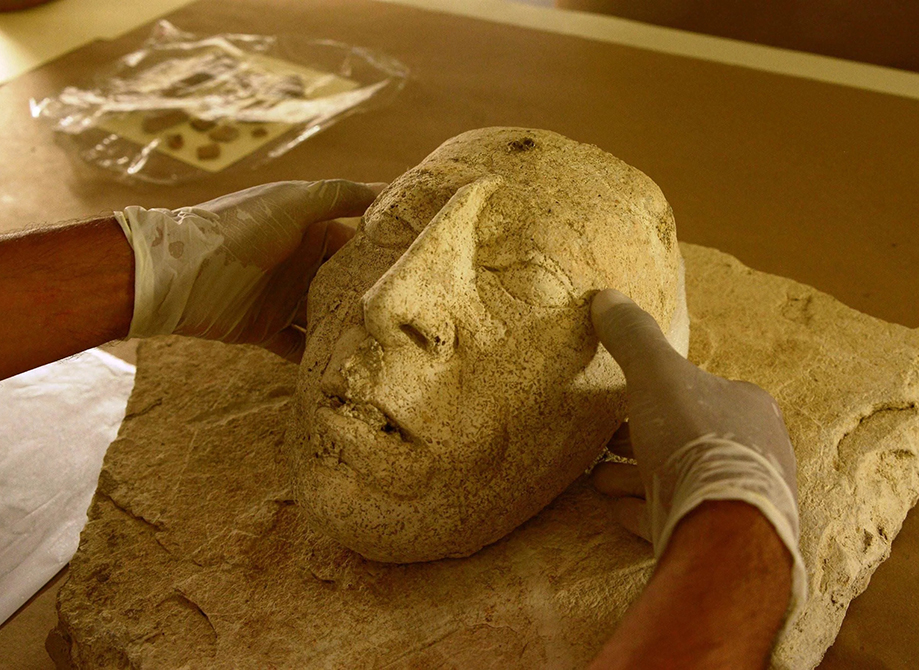Among the numerous Mayan sites, Palenque stands out as one of the most captivating and enigmatic. Hidden deep within the jungles of southern Mexico, Palenque is renowned not only for its well-preserved structures but also for its rich historical background and cultural significance. I will take you through the key highlights of my Palenque adventure, offering a detailed account of this remarkable destination.
The Tomb of King Pakal
One of the most famous attractions at Palenque is the tomb of King Pakal, located within the magnificent Temple of the Inscriptions (Templo de las Inscripciones). King Pakal the Great (K’inich Janaab’ Pakal) is one of the most well-known rulers in Palenque’s history, and his tomb is the centerpiece of the entire site.
As I stood before the towering steps of the Temple of the Inscriptions, I felt a deep sense of awe. This temple is not just an architectural masterpiece but also a silent testament to history. Inside the temple lies the sarcophagus of King Pakal, adorned with intricate carvings that depict his journey to the afterlife. These carvings are among the most significant in Mayan art and provide invaluable insights into the beliefs and customs of the ancient civilization.
To visit Pakal’s tomb, I arranged a guided tour in advance. The guide provided in-depth commentary on King Pakal’s life and his contributions to Palenque. Through the guide’s narration, I learned that Pakal was not only a great ruler but also had a profound influence on the architecture and art of Palenque. His tomb is considered one of the finest examples of ancient Mayan architecture.
Entering the tomb was a surreal experience. Although visitors cannot directly touch the sarcophagus, a glass barrier allows you to closely observe the detailed carvings, making it feel as if you’re stepping back in time to the Mayan world. At that moment, I felt a deep connection to the wisdom and power of the Mayan civilization, as well as their unique beliefs about the afterlife.
Exploring the Old Palace (El Palacio)
Another must-see site within the Palenque ruins is the Old Palace (El Palacio), a grand complex that served as the political center of the city and a prime example of Mayan architectural prowess. The palace consists of numerous rooms, courtyards, and towers, forming a labyrinth of history and art.
Upon entering the Old Palace, I was immediately struck by its intricate layout and exquisite carvings. The stone carvings within the palace depict scenes from the daily life of Mayan rulers, as well as religious ceremonies, offering a vivid glimpse into the social structure and belief systems of ancient Mayan society. The palace’s central tower, believed to have been used for astronomical observations, is particularly impressive and highlights the advanced knowledge of astronomy possessed by the Mayans.
Among the many rooms in the palace, the “Throne Room” captured my imagination the most. This room was once the site where King Pakal conducted meetings and received envoys, with a stone throne placed at the center. Sitting before the throne, I tried to envision the grandeur of the past: the nobles and dignitaries gathered in discussion, with Pakal presiding over the affairs of this magnificent city with wisdom and authority.
The palace’s terrace also offers a fantastic vantage point, providing a panoramic view of the entire Palenque site. Standing there, I felt a deep sense of history, as if Pakal’s spirit still watches over the land, guarding the legacy of his once-glorious city.

Three Important Temples
Palenque is home to three incredibly significant temples that are steeped in history and culture: the Temple of the Cross (Templo de la Cruz), the Temple of the Sun (Templo del Sol), and the Temple of the Foliated Cross (Templo de la Cruz Foliada). These temples were built by Pakal’s son to honor his father and continue his legacy.
The Temple of the Cross is the most prominent among them. The carvings and murals within this temple document the important events following Pakal’s son’s ascension to the throne, as well as the Mayan reverence for the cosmos and deities. The temple’s name is derived from an intricately carved stone stele inside, depicting a cross symbolizing the tree of life, a central concept in Mayan cosmology.
Next, I visited the Temple of the Sun, renowned for its murals and stone carvings. The carvings tell the mythological stories of the sun god, showcasing the Mayans’ deep reverence for the sun and its vital role in their daily lives. Standing before this temple, I could feel the ancient spiritual energy, as if the sun god still watches over this sacred land.
Finally, I arrived at the Temple of the Foliated Cross. Though smaller in size, this temple is equally mysterious. The carvings here illustrate the Mayans’ worship of the wind god, who governed the air and weather and was considered crucial for agricultural prosperity. The serene surroundings of this temple, accompanied by the gentle rustle of the wind through the trees, created a peaceful atmosphere that seemed to whisper ancient stories from the past.
Visiting these three temples gave me a deep appreciation for the religious beliefs of the Mayan civilization and their close connection to the natural world. These temples were not just places for religious ceremonies but also embodied the social structures and cultural traditions of the time.
Visiting the Museum
After exploring the Palenque ruins, I decided to visit the Palenque Museum to gain further insight into the history and culture of this ancient city. The museum, located near the ruins, houses an extensive collection of archaeological finds and artifacts, making it an essential stop for anyone looking to delve deeper into Palenque’s past.
The museum’s exhibits are diverse, featuring beautifully crafted pottery, stone carvings, jewelry, and weapons. Among the highlights are a series of murals and reliefs depicting Mayan mythology and historical events. These artworks not only showcase the religious beliefs of the Mayans but also reflect their social life and daily activities.
One particularly noteworthy exhibit is a replica of Pakal’s sarcophagus, offering visitors a chance to closely examine the intricate carvings and symbolism. The replica provides a realistic depiction of Pakal’s final resting place, allowing for an immersive experience of ancient Mayan funeral rituals.
Through my visit to the museum, I gained a deeper understanding of Palenque’s history. The museum not only highlights Palenque’s significance in the Mayan civilization but also reveals the city’s once-great prosperity and cultural richness. The museum guides were highly knowledgeable, providing detailed background information and explanations that brought each exhibit to life.
When to Visit Palenque?
Palenque is a year-round destination, but the best time to visit is during the dry season, from November to April. During this period, the weather is dry and mild, making it ideal for outdoor activities and exploring the ruins. Although the jungle scenery is lush during the rainy season (May to October), frequent downpours might disrupt your visit.
I visited Palenque in November, when the weather was sunny and the air was crisp. The entire site was enveloped in vibrant greenery, enhancing its natural beauty. With fewer tourists around, I could leisurely explore every corner of the ruins without worrying about crowds.
I recommend visiting Palenque in the early morning or late afternoon. The morning light is perfect for photography, while the evening atmosphere adds a mysterious charm to Palenque, making it feel like you’ve traveled back to the ancient Mayan era.

How to Get to Palenque?
Getting to Palenque is relatively straightforward. The most common way is to fly from Mexico City or Cancun to Villahermosa, and then take a bus or rent a car to reach Palenque. Villahermosa is the closest major city to Palenque, with a roughly two-hour drive between them. Several bus companies operate frequent services, and the fares are affordable.
For those who enjoy road trips, driving from Cancun is an option. Along the way, you can also visit other Mayan ruins such as Chichen Itza and Tulum. The flexibility of driving allows for a more personalized itinerary, and the scenic route offers a memorable road trip experience.
Palenque town itself has many budget-friendly hotels and lodges, just a short drive from the ruins. I chose to stay at a cozy inn only ten minutes away from the site, where the friendly innkeeper provided valuable tips for exploring the ruins.
Palenque is a place that leaves an indelible mark on all who visit. Every stone, every statue tells a story of a past filled with glory and majesty. Whether you are a history buff, an adventurer, or a nature lover, Palenque will satisfy all your fantasies and expectations of the Mayan civilization. This journey not only deepened my understanding of Mayan culture but also filled me with awe for the creative power and wisdom of humanity. I look forward to returning to Palenque to uncover more stories hidden within its jungle-clad ruins.
